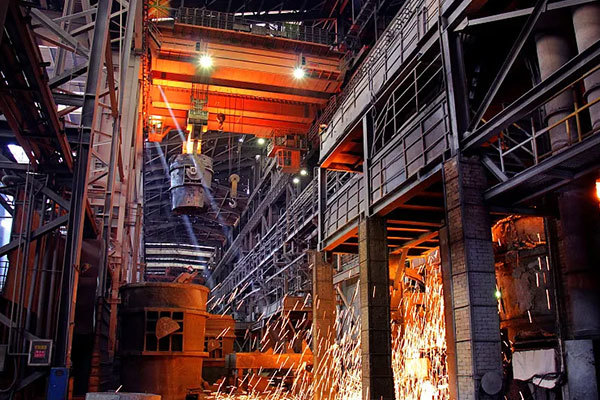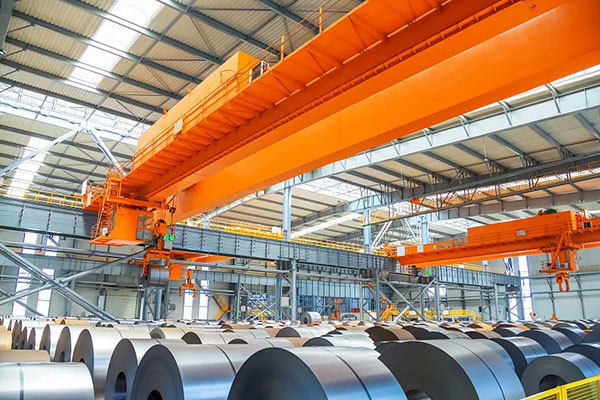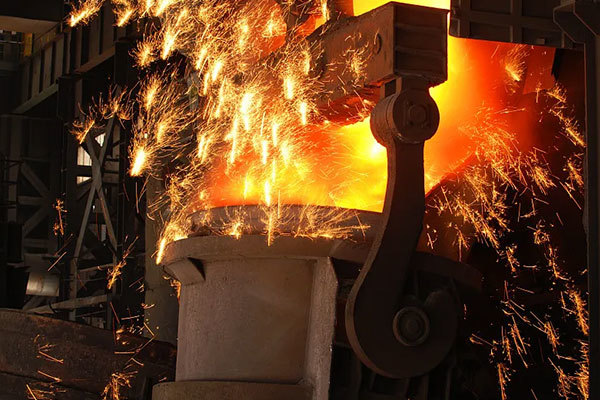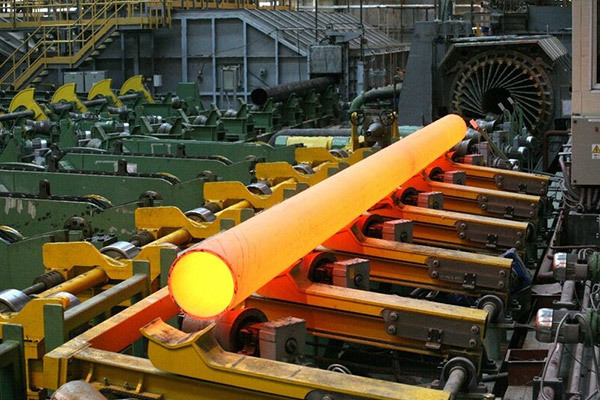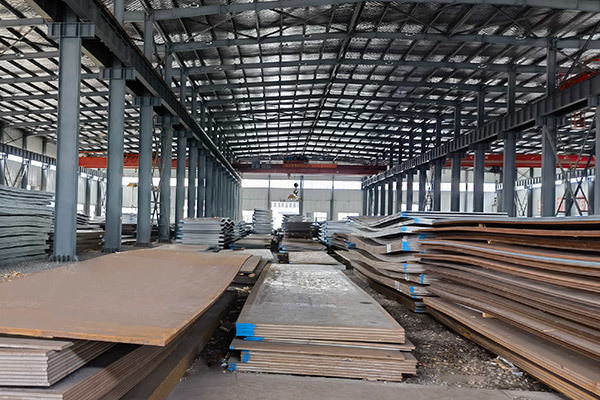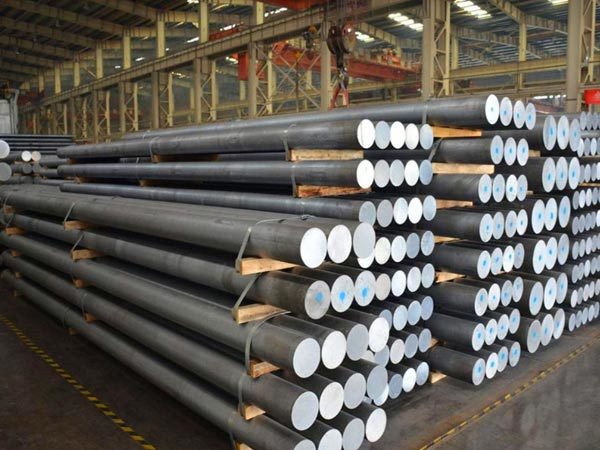POPULAR PRODUCTS
The company stocks The quantity is sufficient and the varieties and specifications are complete. The factory has introduced advanced production equipment and testing equipment such as oil mill wire drawing machines, sintering machines, pelletizing machines, and shearing machines.
High Carbon Spring Tempering Steel Wire
High carbon steel is used to make spring tempered carbon steel wire. Commonly used grades of spring steel wire do not have a specific chemical name, such as 1065 or 1080, which is common in other types of high carbon steel products. Rather, they are specified and manufactured according to performance criteria specific to their primary end use, I .e., the manufacture of coil springs. These performance standards allow a range of carbon content, but there are other factors, such as tensile strength and bending/winding tests must be met within the specified range.
ASTM A633 steel includes four grades: A, C, D, and E, of which the thickness of grade C can reach 4 inches and the thickness of grade E can reach 6 inches. ASTM A633 steel specification is based on the standard specification for standardized high-strength low-alloy structural steel plate, which requires high notch toughness under low temperature conditions.
ASTM A615 Concrete Rebar Grade 40
A615 grade 40 steel adds the most benefit when building materials must hold concrete in compression. Strength is one of the differentiators for these two rebar grades. The minimum tensile strength for A615 grade 40 steel is 70.05 ksi. It has a minimum yield strength of 40 ksi.
ASTM A633 steel includes four grades: A, C, D, and E, of which the thickness of grade C can reach 4 inches and the thickness of grade E can reach 6 inches. ASTM A633 steel specification is based on the standard specification for standardized high-strength low-alloy structural steel plate, which requires high notch toughness under low temperature conditions.
Galvanized steel is a type of steel that is coated with zinc for protection by an electroplating process. The galvanized layer is applied to cold rolled steel at low temperatures. So EG steel is also known as cold galvanized steel. Through electrolytic galvanizing, a uniform and dense zinc layer is finally formed on the surface of the steel, but the mechanical properties of the material are still maintained. Electrogalvanized steel is usually sold in coil or sheet form. EG coil is a kind of material that can be cut, slitted and profiled for other purposes.
Galvanized steel is a type of steel that is coated with zinc for protection by an electroplating process. The galvanized layer is applied to cold rolled steel at low temperatures. So EG steel is also known as cold galvanized steel. Through electrolytic galvanizing, a uniform and dense zinc layer is finally formed on the surface of the steel, but the mechanical properties of the material are still maintained. Electrogalvanized steel is usually sold in coil or sheet form. EG coil is a kind of material that can be cut, slitted and profiled for other purposes.
ASTM A106 is suitable for seamless carbon steel pipe for high temperature environment. ASTM A106 pipe is manufactured according to grade A, B and C. A106-A is equivalent to the domestic 10# steel material, A106-B is equivalent to the domestic 20# material, is a relatively common use of a steel pipe material at home and abroad. A106 seamless steel pipe is mainly used in construction, mechanical processing, electrical, petrochemical and other industries.
Galvanized zinc coil is based on cold-rolled steel plate, which is solidified by 55% aluminum, 43.4 zinc and 1.6 silicon at 600 ℃. It combines the physical protection and high durability of aluminum with the electrochemical protection of zinc. Also known as aluminized zinc steel coil.
Galvanized zinc coil is based on cold-rolled steel plate, which is solidified by 55% aluminum, 43.4 zinc and 1.6 silicon at 600 ℃. It combines the physical protection and high durability of aluminum with the electrochemical protection of zinc. Also known as aluminized zinc steel coil.
A36 is a low-carbon steel containing trace amounts of manganese, phosphorus, sulfur, silicon and other elements such as copper. A36 has good weldability and high yield strength, and is the most specified structural steel plate by engineers. ASTM A36 is most commonly manufactured as a variety of structural steel parts. This grade is used for welded, bolted or riveted construction of bridges and buildings, as well as for general structural purposes. Due to its lowest yield point, A36 can be used to design lighter-weight structures and equipment, and provide good weldability.
Color Coated Steel Coil for Household Appliances
The color coated steel plate for household appliances has good processing performance and decoration performance. It is widely used as the front panel, side panel, rear panel and inner panel of household appliances. Due to its rich colors and high production efficiency, color-coated steel plates are widely used in exterior walls, roofs, interior decoration, doors and windows, etc. They are also very popular in transportation, home appliances and other fields. The home appliance color coated steel plate uses a special finish to make the surface shiny. The front panel is coated with high molecular linear oil-free polyester resin, and the rear panel is coated with modified epoxy coating.
Corrugated color roof is a lightweight, strong, anti-corrosion building material. It is made of color-coated steel plate and designed in different styles, such as wavy, trapezoidal rib, tile, etc. In addition, our corrugated steel roof panels are available in many colors and sizes. Not only that, we also provide customized solutions to better meet your needs. Our color coated roof panels are suitable for many applications, such as garages, industrial workshops, agricultural buildings, barns, garden sheds, etc.
Type 201 stainless steel is an austenitic chromium-nickel-manganese stainless steel, which is developed to save nickel. Type 201 is a low-cost alternative to traditional Cr-Ni stainless steels such as 301 and 304. The nickel is replaced by added manganese and nitrogen. It cannot be hardened by heat treatment, but can reach high tensile strength by cold working. Type 201 is essentially non-magnetic in the annealed condition and becomes magnetic upon cold working. In many applications, the 201 type may replace the 301 type.
Type 201 stainless steel is an austenitic chromium-nickel-manganese stainless steel, which is developed to save nickel. Type 201 is a low-cost alternative to traditional Cr-Ni stainless steels such as 301 and 304. The nickel is replaced by added manganese and nitrogen. It cannot be hardened by heat treatment, but can reach high tensile strength by cold working. Type 201 is essentially non-magnetic in the annealed condition and becomes magnetic upon cold working. In many applications, the 201 type may replace the 301 type.
The differences between the, B and C designations are complex and related to structural tolerances. For steel mesh products, B500A grade steel is usually used, and for steel bars, B500B grade steel is used. B500C steel is rarely required, and it is always worthwhile for structural engineers to check whether B500B grade steel can be used instead of B500C, because B500C usually has a significant cost overhead.
H-beam is a new type of steel for economic construction. H-beam has economical and reasonable cross-sectional shape, good mechanical properties, uniform extension of each point on the cross-section and small internal stress during rolling. Compared with ordinary I-beam, H-beam has the advantages of large cross-sectional modulus, light weight and metal saving, which can reduce the building structure by 30-40%. In addition, because its legs are parallel to the inner and outer sides and the leg ends are right angles, the welding and riveting work can be saved by 25%. It is often used in large buildings (such as factories, high-rise buildings, etc.) with large bearing capacity and good cross-sectional stability, as well as bridges, ships, lifting and transportation machinery, equipment foundations, supports, foundation piles, etc.
Galvanized Corrugated Roof Sheet
Galvanized roof shingles are made of galvanized steel sheet used for roofing and coated with zinc. The zinc coating provides moisture and oxygen protection for the base steel. According to the galvanizing process, it can be divided into hot-dip galvanized steel plate and electro-galvanized steel plate. The corrugated design will improve its strength and enable it to withstand harsh weather conditions. Common designs include wavy, trapezoidal designs, ribbed galvanized roof panels, etc. It can be used as a single-layer board, covering an existing roof, or a steel sandwich panel.
Deformed bar, also known as rebar (short for reinforcing bar), is a steel bar or mesh of steel wires used as tension devices in reinforced concrete and reinforced masonry structures to strengthen and hold the concrete in tension. Deformed bar’s surface is often patterned to form a better bond with the concrete.
Steel wire is one of the four major varieties of steel: plate, tube, profile and wire. It is a reprocessed product made of hot-rolled wire rod by cold drawing. According to the section shape, it mainly includes circle, square, moment, triangle, ellipse, flat, trapezoid, zigzag, etc. Ordinary quality steel wire includes steel wire for welding rod, nail making, mesh making, packaging and printing industry, steel wire for cold heading forging for cold heading rivet and screw, etc., and electrical steel includes special steel wire for production of overhead communication line, steel cored aluminum strand, etc.
A572 steel bars are lightweight, but have good strength, ductility and workability, making them ideal for structural applications. These characteristics make the A572 relatively simple to shape into different structures, while maintaining the ability to withstand large stresses and loads.
Color Coated Galvalume Steel Coil PPGL
PPGL steel is a durable, colorful and economical building material. It is the abbreviation of color coated aluminum-zinc plated steel plate, which is based on aluminum-zinc plated steel plate. The aluminum-zinc coated steel is then continuously painted in coil form. Due to its heat resistance and corrosion resistance, it has become a material for various construction purposes, especially roofs and walls.
A105 is an ASTM specification for steel forgings, primarily for carbon steel forged pipe components. The type of carbon steel wrought alloy involved is a low carbon, manganese and silicon steel similar to the AISI 1330, but with a lower manganese content.
ASTM A588 steel includes Class A, Class B, Class C, and Class K. The ASTM A588 steel specification is based on the standard specification for high-strength low-alloy structural steel with a lower yield point of up to 50ksi for applications requiring high strength and corrosion resistance.
Type 201 stainless steel is an austenitic chromium-nickel-manganese stainless steel, which is developed to save nickel. Type 201 is a low-cost alternative to traditional Cr-Ni stainless steels such as 301 and 304. The nickel is replaced by added manganese and nitrogen. It cannot be hardened by heat treatment, but can reach high tensile strength by cold working. Type 201 is essentially non-magnetic in the annealed condition and becomes magnetic upon cold working. In many applications, the 201 type may replace the 301 type.
A36/Q235/S235JR Carbon Steel Coil
A36 is a low-carbon steel containing trace amounts of manganese, phosphorus, sulfur, silicon and other elements such as copper. A36 has good weldability and high yield strength, and is the structural steel plate specified by the engineer. ASTM A36 steel plate is often manufactured into a variety of structural steel parts. This grade is used for welded, bolted or riveted construction of bridges and buildings, as well as for general structural purposes. Due to its yield point, A36 carbon plate can be used to design lighter-weight structures and equipment, and provide good weldability. Construction, energy, heavy equipment, transportation, infrastructure and mining are the industries where A36 panels are commonly used.
304 stainless steel is a kind of universal stainless steel material, rust resistance than 200 series of stainless steel material is stronger. High temperature resistance is also better, can be as high as 1000-1200 degrees. 304 stainless steel has excellent corrosion resistance and good intergranular corrosion resistance. For oxidizing acids, it is concluded in the experiment that 304 stainless steel has strong corrosion resistance in nitric acid with a concentration of less than or equal to 65% of the boiling temperature. It also has good corrosion resistance to alkali solution and most organic and inorganic acids.
316L stainless steel is an austenitic stainless steel metal alloy that contains nickel and molybdenum, making it corrosion resistant. 316L is a 316 low carbon grade. This grade is not affected by sensitization (grain boundary carbide precipitation). It is often used for large-gauge welded parts (approximately over 6mm). 316L stainless steel has higher creep, fracture stress and tensile strength than chromium nickel austenitic stainless steel at high temperature.
Type 201 stainless steel is an austenitic chromium-nickel-manganese stainless steel, which is developed to save nickel. Type 201 is a low-cost alternative to traditional Cr-Ni stainless steels such as 301 and 304. The nickel is replaced by added manganese and nitrogen. It cannot be hardened by heat treatment, but can reach high tensile strength by cold working. Type 201 is essentially non-magnetic in the annealed condition and becomes magnetic upon cold working. In many applications, the 201 type may replace the 301 type.
Grade 316 stainless steel is an austenitic form of stainless steel with a molybdenum content of 2-3%. The addition of molybdenum makes the metal more resistant to pitting and corrosion and improves its resistance to exposure to high temperatures. This grade of stainless steel is particularly effective when used in acidic environments. With this metal, corrosion caused by acetic acid, hydrochloric acid and other forms of acid can be prevented.
AISI/SAE 1018 Carbon Steel Bar
AISI 1018 carbon steel round bars are made of carbon steel, and its composition includes carbon, chromium, manganese, molybdenum, phosphorus, sulfur and silicon. Carbon steel SAE1018 rods are commonly used for shafts, pins, rods, spindles, sprocket assemblies and a wide range of parts. The 1018 bar can be finely processed without any difficulty, and its chips are hard and continuous, so it can be processed into all shapes.
ASTM A572 carbon steel low-alloy steel is widely used as bridge panels, support plates, mechanical mounting plates, etc. for construction equipment, transmission towers, racks and other equipment.
Galvanized pipe Galvanized steel pipe, also known as galvanized pipe, is divided into two kinds of hot dip galvanized and electro galvanized. The hot-dip galvanized layer is thick, the coating is uniform, the adhesion is strong, and the service life is long. Zinc is commonly used to galvanize or coat these metal tubes. The galvanizing process for steel pipes involves immersing the metal pipe in a bath containing 450 degrees Fahrenheit molten zinc. After a few minutes, the hot-dip galvanizing process is complete.
EN8/EN9 En Series Carbon Steel Bar
En-8 (1040) It is an unalloyed medium carbon steel with reasonable tensile strength. It is usually supplied in a cold drawn or rolled state. Tensile properties may vary, but are usually between 500 - 800 N/mm. It is widely used in applications that require better performance than mild steel but cannot justify the cost of alloy steel. EN8 can be flame or induction hardened to produce good surface hardness and moderate wear resistance.
ASTM A283 is a carbon steel coil used for general structural purposes. The steel has low and medium tensile strength. The ASTM A283 steel specification covers four structural quality grades of mild steel, grades A, B, C, and D, for general application.
301 grade stainless steel is a common austenitic stainless steel with good corrosion resistance and high carbon content, and can be cold worked to various temperatures. Among stainless steels, 301 is the most easily strengthened steel by cold deformation. Cold deformation processing can improve the strength and hardness of steel, and retain sufficient plasticity and toughness. In addition, this steel has good rust resistance under atmospheric conditions, but its corrosion resistance in reducing media is poor, and its corrosion resistance in chemical media such as acid, alkali and salt is poor. Therefore, it is not recommended for corrosive environments.
A36/Q235/S235JR Carbon Steel Plate
A36 is a low-carbon steel containing trace amounts of manganese, phosphorus, sulfur, silicon and other elements such as copper. A36 has good weldability and high yield strength, and is the structural steel plate specified by the engineer. ASTM A36 steel plate is often manufactured into a variety of structural steel parts. This grade is used for welded, bolted or riveted construction of bridges and buildings, as well as for general structural purposes. Due to its low yield point, A36 carbon plate can be used to design lighter weight structures and equipment, and provide good weldability. Construction, energy, heavy equipment, transportation, infrastructure and mining are the industries where A36 panels are commonly used.
304L is one of the austenitic stainless steels with a chromium content of at least 18%, a nickel content of at least 8%, and a maximum carbon content of 0.03. 304L stainless steel is an ideal choice for various household and commercial applications, with excellent corrosion resistance, ease of manufacturing and excellent formability. Austenitic stainless steels are also considered to be the easiest to weld among high alloy steels and can be welded by all fusion and resistance welding processes.
A179 seamless cold drawn low carbon steel pipe is equivalent to China's No. 10 high-quality low-carbon steel. A179 is suitable for cold-drawn high-quality low-carbon seamless steel pipes for heat exchangers and condensers.
ASTM A514 steel is available in several grades: A, B, C, E, F, H, J, K, M, P, Q, S, and T, all of which have the same mechanical properties. ASTM A514 steel plates are conventionally quenched and tempered steel. ASTM A514 steel coil is known for its high yield strength, weldability and toughness, even at low temperatures. ASTM A514 steel is a special high-strength steel, mainly used as building structural steel.
ASTM A573/A573M grades are divided into 58, 65 and 70. Steel coils are suitable for structural carbon-manganese-silicon steel plates with three tensile strength ranges. ASTM A573/A573M steel coils are mainly used for important purposes of improving notch toughness at room temperature.
A572/S355JR Carbon Steel Plate
A572 grades are divided into: 42, 50, 60, 65. The steel plate is light in weight, but has good strength, ductility and workability, making it an ideal choice for structural applications. These characteristics make the A572 relatively simple to shape into different structures, while maintaining the ability to withstand large stresses and loads.
ASTM A588 steel includes Class A, Class B, Class C, and Class K. The ASTM A588 steel specification is based on the standard specification for high-strength low-alloy structural steel with a lower yield point of up to 50ksi for applications requiring high strength and corrosion resistance.
ASTM A283 is a carbon steel plate used for general structural purposes. The steel has low and medium tensile strength. The ASTM A283 steel specification covers four structural quality grades of mild steel, grades A, B, C, and D, for general application.
304 stainless steel is a kind of universal stainless steel material, rust resistance than 200 series of stainless steel material is stronger. High temperature resistance is also better, can be as high as 1000-1200 degrees. 304 stainless steel has excellent corrosion resistance and good intergranular corrosion resistance. For oxidizing acids, it is concluded in the experiment that 304 stainless steel has strong corrosion resistance in nitric acid with a concentration of less than or equal to 65% of the boiling temperature. It also has good corrosion resistance to alkali solution and most organic and inorganic acids.
ASTM A514 steel is available in several grades: A, B, C, E, F, H, J, K, M, P, Q, S, and T, all of which have the same mechanical properties. ASTM A514 steel plates are conventionally quenched and tempered steel. ASTM A514 steel plate is known for its high yield strength, weldability and toughness, even under low temperature conditions. ASTM A514 steel is a special high-strength steel, mainly used as building structural steel.
304L is one of the austenitic stainless steels with a chromium content of at least 18%, a nickel content of at least 8%, and a maximum carbon content of 0.03. 304L stainless steel is an ideal choice for various household and commercial applications, with excellent corrosion resistance, ease of manufacturing and excellent formability. Austenitic stainless steels are also considered to be the easiest to weld among high alloy steels and can be welded by all fusion and resistance welding processes.
310S is an austenitic stainless steel that combines excellent high temperature performance with good ductility and weldability. It is usually used for high temperature applications because its high chromium and nickel content provides solid corrosion resistance, excellent oxidation resistance and excellent strength at temperatures up to 2100 °F. Due to its high chromium and nickel content, it is superior to 304 or 309 stainless steel in most environments.
316Ti(UNS S31635) is a titanium stabilized version of 316 molybdenum-containing austenitic stainless steel. 316 alloys are more resistant to general corrosion and pitting/crevice corrosion than traditional chromium-nickel austenitic stainless steels such as 304.
403 stainless steel has excellent mechanical properties, including high hardness, high strength and high wear resistance. It is commonly used in the manufacture of high hardness tools, cutting tools, bearings and valves and other industrial parts, especially in applications requiring corrosion resistance and wear resistance. In addition, 403 stainless steel can also be used in food processing equipment, chemical equipment, medical equipment and other fields to meet the requirements of corrosion resistance and mechanical properties.
316Ti(UNS S31635) is a titanium stabilized version of 316 molybdenum-containing austenitic stainless steel. 316 alloys are more resistant to general corrosion and pitting/crevice corrosion than traditional chromium-nickel austenitic stainless steels such as 304.
Production Experience
Active Employees
Floor Area
Production Line
BAOZHONG STEEL (SHANDONG) GROUP CO., LTD.
Baozhong Steel (Shandong) Group Co., Ltd. is a professional steel production and sales company located in Jinan City, Shandong Province, close to China's famous ports Tianjin Port and Qingdao Port, with convenient logistics and export transportation, superior production and operation environment, mature industrial supporting facilities, and complete related supporting facilities.The company has advanced production equipment and technical strength, adopts internationally advanced production technology and quality control system to ensure that each batch of steel can meet or exceed international standards.

FACTORY WORKSHOP
The company has advanced production equipment and technical strength, adopts internationally advanced production technology and quality control system to ensure that each batch of steel can meet or exceed international standards. Equipped with a complete product production line, the main equipment includes cutting machines, bending machines, punching machines, water jet cutting machines, polishing machines, plate cutting machines, wire drawing machines, etc.
CUSTOMER VISIT
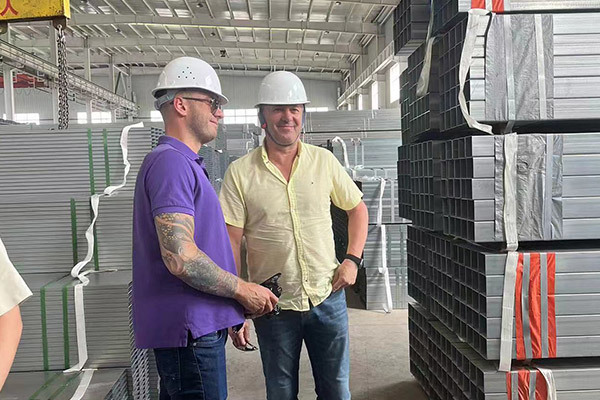
Customer visit

Customer visit

Customer visit
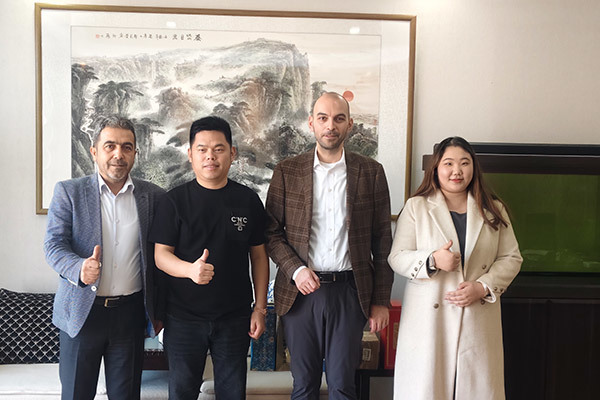
Customer visit
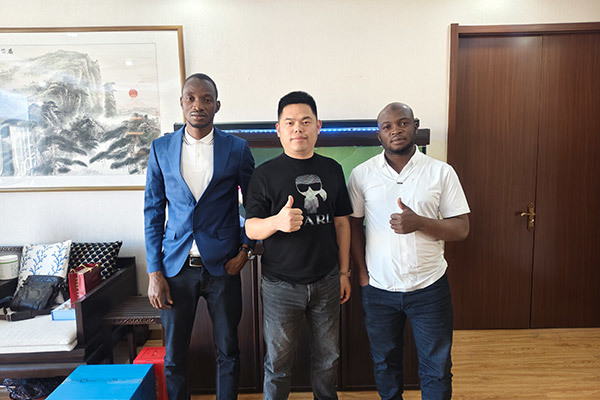
Customer visit

Customer visit
NEWS CENTER
Our products are complete in variety, sufficient in stock, of excellent quality, low in price and considerate in service. At the same time, we are also the designated supplier of many large enterprises, providing steel for major project renovations in many countries.
2024/05/13



